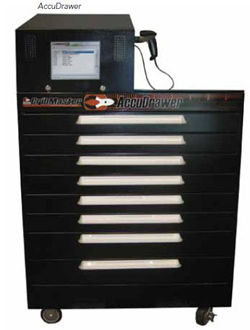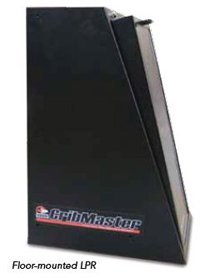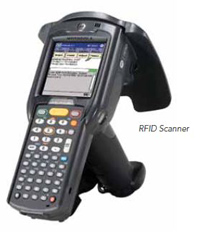
Tool Systems for the 21st Century

Susan Hebrank, Marketing Services Coordinator
Contributing Editor
Cribmaster
Every MRO operation requires a high level of accountability for tooling. We all know what happens when we are missing the tool we need to complete a task. What is the actual cost of this problem and how does it impact us, our crew, or our operation? What are the risks?

In aviation maintenance operations, any lost or misplaced tool is a safety hazard or a potential risk for foreign object damage (FOD). After years of studying documents, attending training classes and respecting the “NO-FOD” signs posted throughout the facility, it’s a compliance that is deeply engrained in every aviation maintenance specialist. While training and daily reminders are important and are still required, there are now proven processes for tool control to ensure a FOD-free environment. Most government contracts require proof of your facility’s documented FOD processes. How can we perform a quality job in the shortest amount of time possible and remain FOD compliant without feeling like big brother is watching over our shoulder?

It’s called “passive issue.” While this concept in tool management is new, the process is not. Maintenance specialists want to do maintenance work as opposed to less productive activities such as recording data in logs, scanning barcodes, checking calibration schedules, or walking to and waiting at the tool crib. With a desire to get on with doing the job, even the most seasoned specialist can miss doing some of these steps. With “passive-issue” technology such as radio frequency identification (RFID), highly sensitive scales and software, it becomes easy for the specialist to speed up this mundane process by eliminating these types of wasteful activities and get the needed supplies, while the system figures out the rest. Because RFID technology utilized in this system requires very little training, it has less of an impact on the culture of each member of the maintenance crew.
How It Works
RFID tool-tracking devices include a variety of options such as modular drawer systems, cabinets, scanners, portal systems and last-point-read (LPR) monitors. These devices paired with inventory management software provide numerous benefits. As for the portal system (AccuPort), a maintenance specialist can simply walk into an unmanned, secured tool crib 24/7 with their RFID-enabled employee badge. Inside this caged area are stored parts, tools, safety products, certified tool kits (CTKs) or anything needed to do a maintenance task. Once the items are retrieved, the maintenance specialist presses the exit button to unlock the door and walk out of the crib. The system records the transaction for each item as they walk away. The specialist does all this without having to stop and enter codes, record data in a log or scan barcodes.
To keep the tools in the proximity of the work area, the modular drawer systems (AccuDrawers) can also be placed at point-of-use locations in FOD critical areas.
The drawer system works like this: a maintenance specialist walks up to the electronic cabinet containing tools, parts or small gauges tagged individually with a RFID tag, or the location is monitored with a patented RFID switch. Just as in all the devices in the system, the specialist is required to self-identify with their employee badge. Transactions are automatically recorded when inventory is removed from the cabinet. When the tool is removed, the system automatically “knows” in real time who took it, where it was used and when it was returned. When items are missing from the cabinet, the touch screen on the cabinet prominently displays “ITEMS OUT” on the screen, making FOD checks fast, accurate and easy.

Additionally, with recent advancements in RFID tags, the tag size has been reduced significantly and performs just as effectively. The tags vary in size and shape so that they can be secured directly to a small wrench or a gauge with heat-sensitive tape or special adhesives. Tags this small, when affixed to the tool, won’t hinder the usability of the tool.
Of importance, LPR monitors can be used to provide increased visibility in tool-tracking processes in FOD-critical environments. By placing LPR monitors at choke points in the facility, tool movement can be tracked and monitored so that search time is reduced significantly if items do go missing.

What Happens When a Tool Goes Missing?
What happens when a tool does go missing? What is the process to locate it? Consider this potential FOD risk scenario. It’s the end of a shift and one tool is missing from the cabinet. The system tells us employee “X” removed a 5/16-inch wrench from the cabinet at 8:05 a.m. in bay three. With the LPR monitors strategically placed at the entrance to the bays, the following information is also provided. The missing 5/16-inch wrench was last seen entering bay three at 8:10 a.m. with no other movement since this last read. To locate the item, the operator uses the RFID scanner driven by the software and moves it systematically throughout the bay area where the tool went missing.

The reader on the RFID scanner detects the tag and sounds audibly. In this case, the scanner isolated the missing wrench in the trash can where it was accidentally tossed. In this scenario, the good news was that the wrench was quickly located, thus preventing an operational lock down to search for the missing item. Having a system that tells you a tool is missing is absolutely a key part of the FOD prevention solution, but having a system with pinpoint accuracy enabling us to physically locate any missing item as soon as it goes missing should be paramount in any maintenance operation. RFID tool tracking provides a greater level of confidence, knowing that the scenario such as the one described won’t have a negative outcome on us or our facility.
In summary, tool tracking for helicopter maintenance in the twenty-first century is not about locking down tools, creating more barriers or worrying about big brother looking over our shoulder. A good tool inventory management system should be flexible, accurate and effective. It should take into consideration all aspects of inventory flow around the facility to maintain a safe, FOD-free environment and to ensure that maintenance specialists have the right tool at the right time.
Susan Hebrank is the Marketing Services Coordinator for WinWare Inc., the makers of the CribMaster Inventory Management System.For questions, please contact:
 Susan Hebrank
Susan Hebrank
Marketing Services Coordinator
WinWare Inc. (makers of CribMaster)
shebrank@wwga.com
(770) 419-1399, Ext. 348
